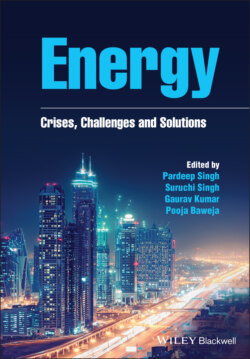Читать книгу Energy - Группа авторов - Страница 81
2.5.3 Cost‐Effective Production
ОглавлениеGlobally, levelized cost of electricity (LCOE) from solar and wind energy is decreased by a large factor from 2010 to 2017 as depicted in Figure 2.6. Electricity production from other energy sources has not realized any major change. In fact, global weighted average LCOE as represented by the dashed line in Figure 2.6 has increased for geothermal and hydropower while for biomass it remains the same for the period from 2010 to 2017.
Onshore and offshore wind technologies are competitive to fossil fuels and in some regions, LCOE from wind energy is less than that from fossil fuels. Electricity production cost from PV is also approaching the cost from fossil fuels. Cost of crystalline PV has reduced by 99.5% in the last 30 years due to tremendous research in PV industry with the development of novel materials and techniques (www.economist.com). As reported by (IRENA 2019a), the global weighted average total installation cost for offshore wind projects will decline in the near future, and it will be USD 1700–3200/kW by 2030 and USD 1400–2800/kW by 2050.
Electricity generation using hydro technology is the most cost‐effective and preferred over the other renewable energy sources method where available. Using gravity water wheel instead of Kaplan turbines in small‐scale hydro plants reduces the cost as the former cost is 33–60% of the latter (Quaranta and Revelli 2018). Further, usage of PATs also decreases the installation cost which leads to overall reduction in electricity generation cost from the small hydro plants as well.
Cost of power generation using geothermal energy largely depends on the site. Normally, cost of geothermal plant lies between USD 1870 and 5050 per kW. Compared with direct dry steam and flash plants, the cost of binary plant is high. The LCOE from a geothermal plant is between USD 0.04 and 0.14 per kWh, assuming maintenance costs of USD 110 per kW per year and a life span of 25 years (IRENA 2017).
